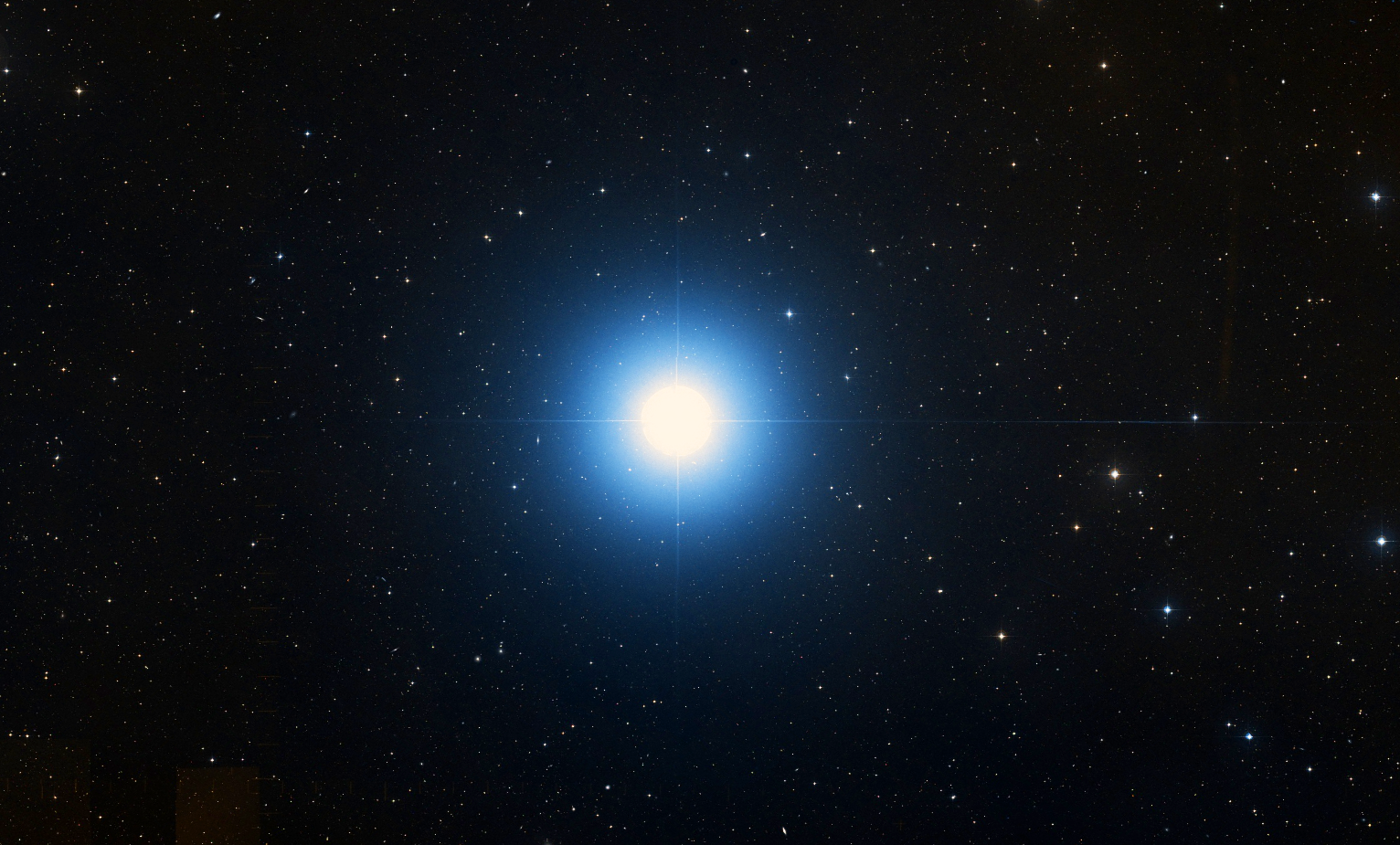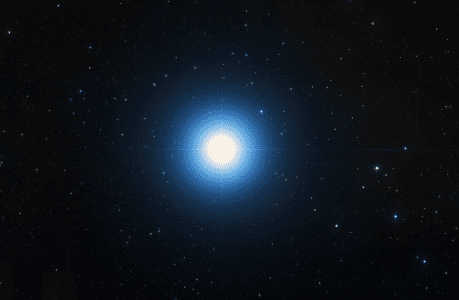Spica, also known as Alpha Virginis, is the brightest star in the constellation Virgo and one of the most prominent stars in the night sky. It is a binary star system located around 260 light-years away from Earth, and it is visible in the northern hemisphere from March to September. Spica is easily recognisable by its blue-white colour and its position at the base of the constellation Virgo’s “ear of wheat.”
Characteristics
Spica is a massive and luminous star, with a total mass of around 11 times that of our sun and a luminosity over 2,200 times greater. It has a surface temperature of approximately 22,400 Kelvin, making it one of the hottest stars visible from Earth. Spica’s size is also impressive, with a diameter about seven times larger than the sun.
Spica is a binary star system, which means that it consists of two stars orbiting around each other. The two stars are named Spica A and Spica B, with Spica A being the brighter and more massive star. The two stars are separated by a distance of about 11 million kilometres, which is roughly three times the distance between the Earth and the moon. Spica A is a massive blue-white star, while Spica B is a smaller, cooler star that is less luminous.
History and Cultural Significance
Spica has been known to humans since ancient times and has played a significant role in many cultures and mythologies. In ancient Babylonian astronomy, Spica was known as “The Seed Furrow,” representing the beginning of the agricultural year. In ancient Egypt, Spica was associated with the goddess Isis and was used to mark the beginning of the Nile flood season.
In ancient Greek astronomy, Spica was known as “The Ear of Wheat” and was associated with the goddess Demeter, the goddess of agriculture and fertility. The Romans later named the star “Spica,” which means “ear of grain” in Latin. In Chinese astronomy, Spica was part of the constellation Beihe, representing a pair of animals that would lead the emperor’s chariot.
Spica has also been used for navigation and timekeeping. In the 16th century, the Portuguese used Spica as a reference point for determining their longitude while navigating the seas. Today, Spica is still used by astronomers as a calibration star to measure the brightness and colour of other stars.
How can I find Spica
Spica is a bright star and can be easily found in the night sky during the spring and summer months in the northern hemisphere. Here are some tips for locating Spica:
- Look for the constellation Virgo: Spica is the brightest star in the constellation Virgo, which is a zodiac constellation located between the constellations Leo and Libra. Look for Virgo in the eastern sky in the evening hours during the spring and summer months.
- Look for the “ear of wheat”: Once you have located the constellation Virgo, look for a bright star at the bottom of the constellation’s “ear of wheat” shape. Spica is located at the base of this shape, and its bright blue-white colour should make it easy to spot.
- Use a star chart: If you are having trouble finding Spica or are not familiar with the night sky, consider using a star chart or a mobile app that can help you locate the constellation Virgo and identify Spica.
Remember, it’s always best to view stars in a dark location away from city lights, where the stars will be more visible. With a little bit of patience and persistence, you should be able to locate Spica and enjoy its beauty in the night sky.
How bright is Spica
Spica is one of the brightest stars in the night sky and has an apparent visual magnitude of about 0.98. The apparent visual magnitude is a measure of the brightness of a celestial object as seen by an observer on Earth, with smaller numbers indicating a brighter object.
To put this in perspective, Spica is about 2.5 times brighter than the star Vega, which is the fifth brightest star in the night sky. It is also about 10 times brighter than the star Arcturus, which is the fourth brightest star.
However, Spica’s distance from Earth means that its absolute magnitude (a measure of a star’s intrinsic brightness) is much greater than its apparent magnitude. Spica’s absolute magnitude is about -3.55, which means that if it were located at a distance of 10 parsecs (32.6 light-years) from Earth, it would appear much brighter than it does now.
Overall, Spica’s brightness and blue-white colour make it one of the most impressive and easily recognizable stars in the night sky.
Conclusion
Spica is a fascinating and significant star, with a rich history and cultural significance. Its massive size and luminosity make it one of the most prominent stars in the night sky, and its binary nature adds to its intrigue. Whether you are an astronomer, stargazer, or lover of mythology, Spica is a star worth exploring and appreciating.

